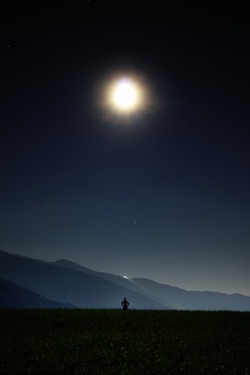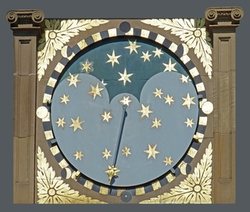Moon Phases in History
 Let′s think about the prehistoric times, when Homo sapiens were only the next stage of the human development. Imagine the prehistoric human, creeping out of the cave, looking at the sky and the Moon, wondering what this glowing object is. It could be the only thing people of that time thought about. It is not surprising why the Moon has become the inspiration to so many religions, mysteries, legends and stories during the time of humanity existence.
Let′s think about the prehistoric times, when Homo sapiens were only the next stage of the human development. Imagine the prehistoric human, creeping out of the cave, looking at the sky and the Moon, wondering what this glowing object is. It could be the only thing people of that time thought about. It is not surprising why the Moon has become the inspiration to so many religions, mysteries, legends and stories during the time of humanity existence.
The first people to pay attention to the regular changes of the Moon were the Greek. Pythagoras watched the Moon in 5000 BC. The object to his observation was the terminator as we call it today: the edge line between the light and the dark parts of the Moon. According to the terminator′s shape, he supposed Moon to be a sphere, and he was right.
Later, in 350 BC, Aristotle continued to develop the observation of Pythagoras. He followed the shade of the Earth on the lunar surface during the lunar eclipse, and he concluded that the Earth could also be a sphere. However, the conclusion created by Aristotle was not eligible, as he created a geocentric model of the world, where the Earth stays on its place and the Sun, the stars and our satellite revolve around it. Aristotle also thought the Moon to be semi – transparent and to revolve around our planet perfectly.
 By the 16th century the humanity made the first steps towards comprehending Solar system. At the beginning of the 16th century the astronomer Nicolaus Copernicus created the heliocentric model of the universe, with the Sun in the center and the Earth revolving around it. In the 17th century another astronomer Galileo created the telescope and watched the terminator closer. He found out that the surface of the Moon is uneven and filled with craters and mountains.
By the 16th century the humanity made the first steps towards comprehending Solar system. At the beginning of the 16th century the astronomer Nicolaus Copernicus created the heliocentric model of the universe, with the Sun in the center and the Earth revolving around it. In the 17th century another astronomer Galileo created the telescope and watched the terminator closer. He found out that the surface of the Moon is uneven and filled with craters and mountains.
These findings were shocking and essential for the development of the science during that period. Abovementioned astronomers disproved the thoughts of Aristotle about the geocentric model of the universe and the view on the Moon as on the smooth and even sphere. The invention of the telescope gave a turn to the science and to the minds of people, providing an understanding that the Sun is the center of the universe and the Earth revolves around it with the imperfect Moon orbiting the Earth.
The Oldest Lunar Calendars
The old drawings found in German and French caves have been hiding the oldest lunar calendars and the first constellations known to the humanity. These drawings date back to the late Upper Paleolithic culture. During that period, people who were somebody like priests and astrologers were observing the heavens and making the first grounded observations regarding the influence of heavenly bodies on the processes on the Earth like changing seasons, the length of the day, and phases of Moon.



